Question
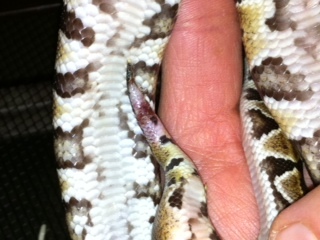 tail rot
tail rot
Hello, What is best treatment for tail rot on a young ball python? Please include what you consider ideal temps, humidity, other conditions, diet recommendations, medications, etc., as well as no-nos. Thanks!
PS. Background: I've had him a few weeks and just got him to eat a couple of live mice (he wouldn't touch frozens and was starving himself!, but went right for the live ones. That was about 5 days ago...he has yet to poop).
Here's what I have tried so far: keeping him drier and warmer in habitat, gently bathing him in slightly-above-tepid water, rinsing tail with iodine tincture solution, then applying either triple antibiotic ointment (generic for reg. strength Neosporin) or silver sulfadiazine (Silvadene) cream. I'm not seeing a lot of overall improvement, yet I feel like I do see fluctuations: sometimes I think it looks better, sometimes worse. It does not appear to be spreading beyond last 3/4" of tail, so "infection" is not quite up to his cloaca. He appears very healthy (and happy!) otherwise. I noticed yesterday that he reacted as if his tail tip hurt, whereas he did not before and did not today.
My set-up includes a very clean 55-gallon tank, appropriate size hidey-hole (made of composite), aspen bedding, ample but shallow water bowl, temp variation, and no roommates (that we know of).
Thanks!
GB
AnswerHi GB,
As a general rule, tail rot/dry gangrene infections of this nature tend to respond poorly to topical treatment. The nature and origin of tail rot differs from necrotizing dermatitis or "scale rot" which is far more responsive to the type of treatment you are using. With that said, I would still encourage you to continue with the topical applications. It can't hurt and who knows....it may help just enough to help arrest the situation. The products you are using should be be providing a fairly wide anti-bacterial spectrum. Chlorhexidene is also often used in these cases but I doubt it adds anything more then what you are already using.
Tail rot usually starts with restriction to the blood circulation to the tail, sometimes through injury but often through retained shed that constricts the tail. Low humidity is the common cause of retained tail shed. This causes tissue death and infection deep within the tail tissue where topical treatment does not penetrate or absorb well. People with diabetes suffer similar type complications in their feet due to blood flow problems. When an area has poor blood flow, even systemic antibiiotics are less effective.
Scale rot, on the other hand, is usually caused by exposure to dirty, damp substrate conditions and results in a surface infection of the belly scales.
You are obviously keeping a close eye on the condition of the tail and that would be my best advice at this stage. These situations can go either way and either start spreading up toward the body, at which point a vet visit is mandatory, or simply arrest and resolve on their own with the affected bit eventually falling off.
Alot depends on the status of your python's immune system and you can affect that through correct husbandry and keeping his stress level down. The description of his care sounds very good. His temp. variation should include access to a 90 - 95F hot spot during the day which will keep his immune system functioning well. If your house is cool at night (below 72F) you may want to add a small under tank heat pad for nighttime use. As far as humidity goes, I'm a fan of providing a humid hide rather then trying to keep the entire enclosure at a certain level. A humid hide is just an enclosed hide with some slightly damp moss or similar substrate inside. This gives them a range of humidity levels to choose and mimics the more humid rodent burrows that balls often inhabit in the wild. Something around 40 - 60% humidity should help avoid any shedding issues in the future.
Congratulations on getting him to eat. At some point in the future you should ideally try to get him onto frozen/thawed small to medium rats but that can wait for now. Having him eating regularly is more important while he fights this infection. Stick to less dangerous mice while he is still taking live prey. You didn't happen to mention his size but two mice every 7 to ten days should be fine for a juvenile. It can take about a week for them to defecate after a meal.
It sounds like you are doing very well with him and this situation obviously started before you had him. I hope it resolves well for you. Sometimes, minor surgery is required to stop the spread and this is much easier on everyone if it happens while the infection is still down in the thinner part of the tail.


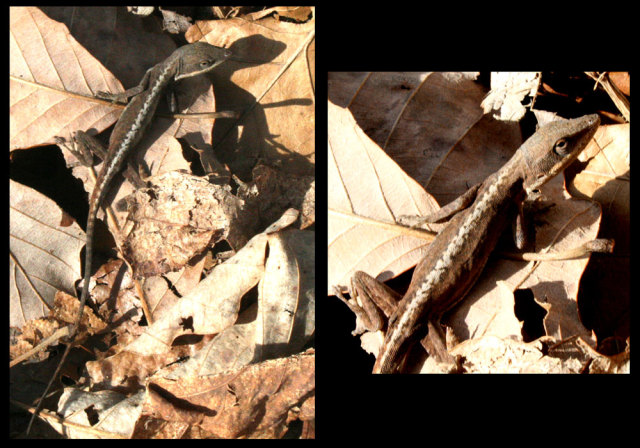 lizard id
Question
lizard-id
Hi. Can you please help identify thi
lizard id
Question
lizard-id
Hi. Can you please help identify thi
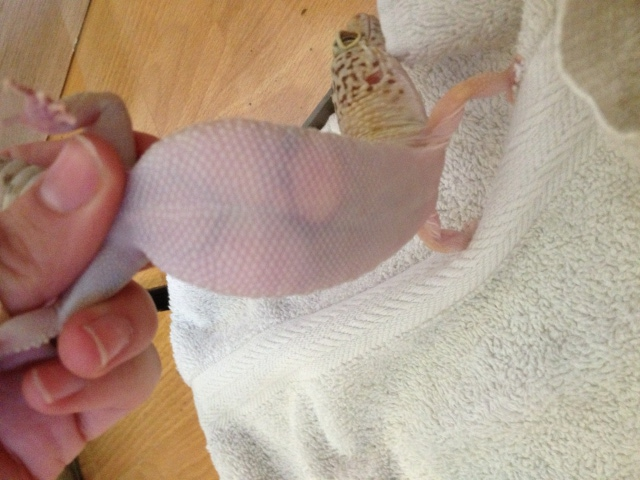 Gravid ?
QuestionOreo
Oreo
QUESTION: Does my femal
Gravid ?
QuestionOreo
Oreo
QUESTION: Does my femal
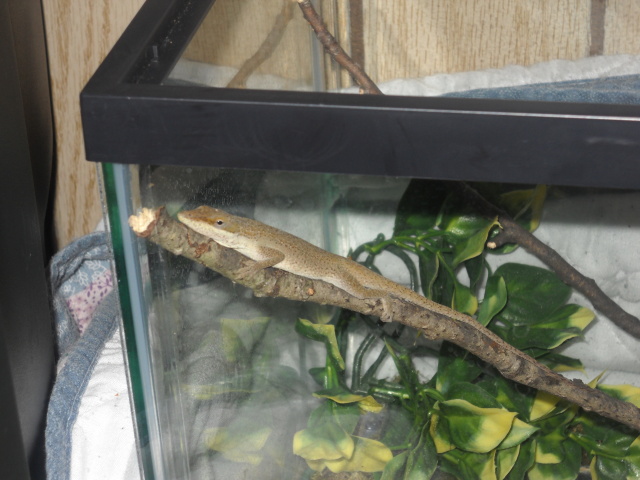 male green anole
QuestionQUESTION: Hi my green anole is always brown jus
male green anole
QuestionQUESTION: Hi my green anole is always brown jus
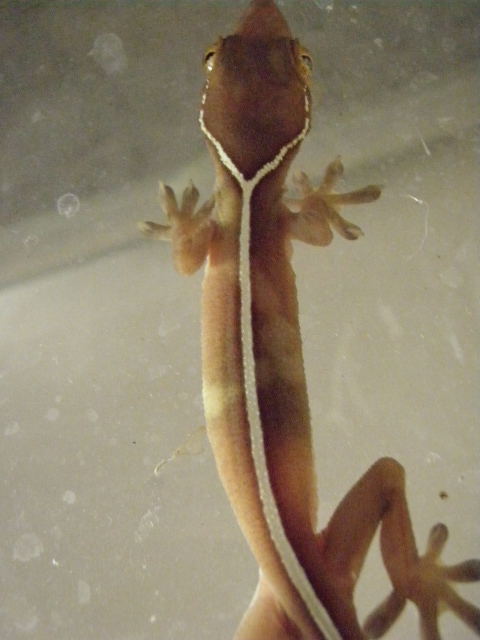 spots on gekko vittatus
Question
Spots foto
Hello, I have recently notic
spots on gekko vittatus
Question
Spots foto
Hello, I have recently notic
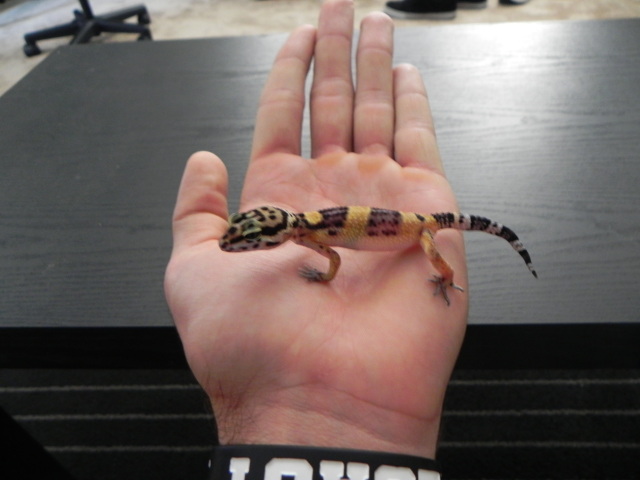 Leopard Gecko... Parasites ?
QuestionMy Gecko
QUESTION: HI Tracie,
I recentl
Leopard Gecko... Parasites ?
QuestionMy Gecko
QUESTION: HI Tracie,
I recentl